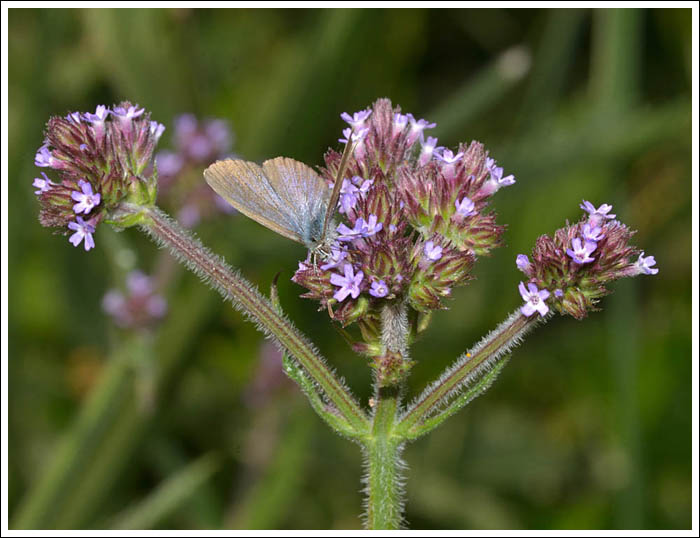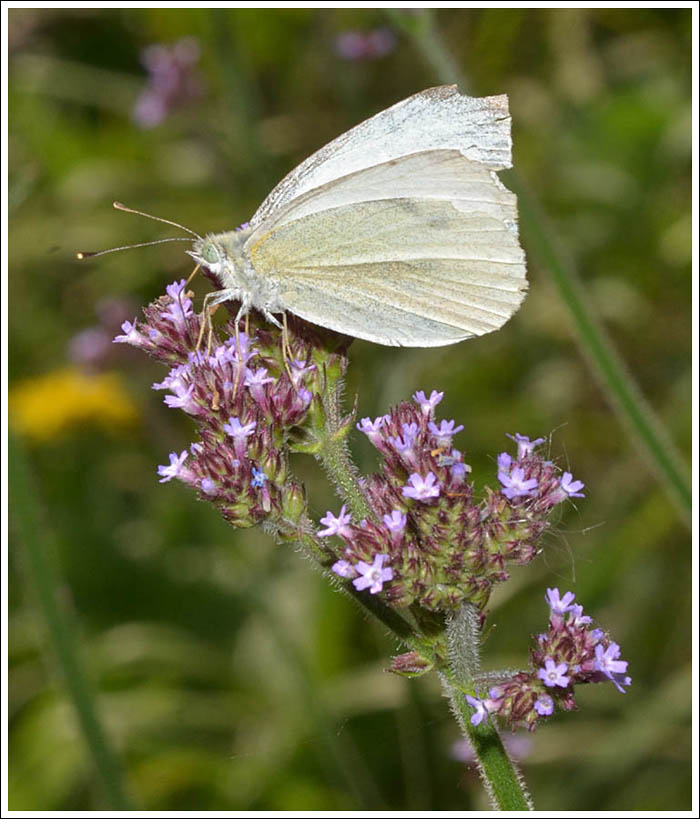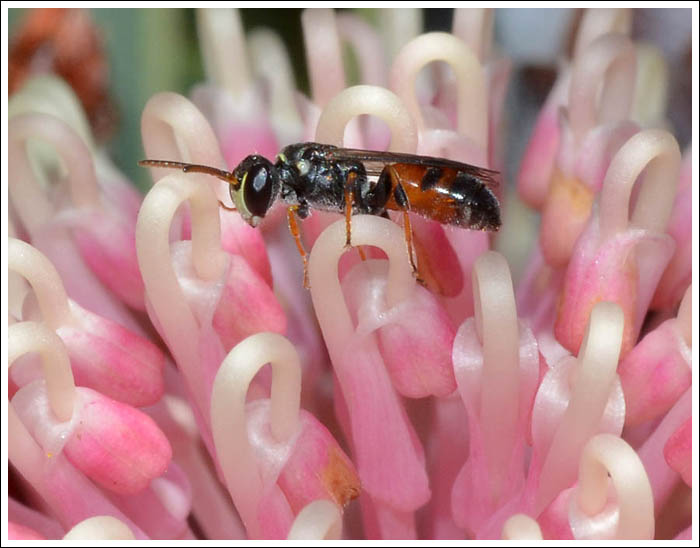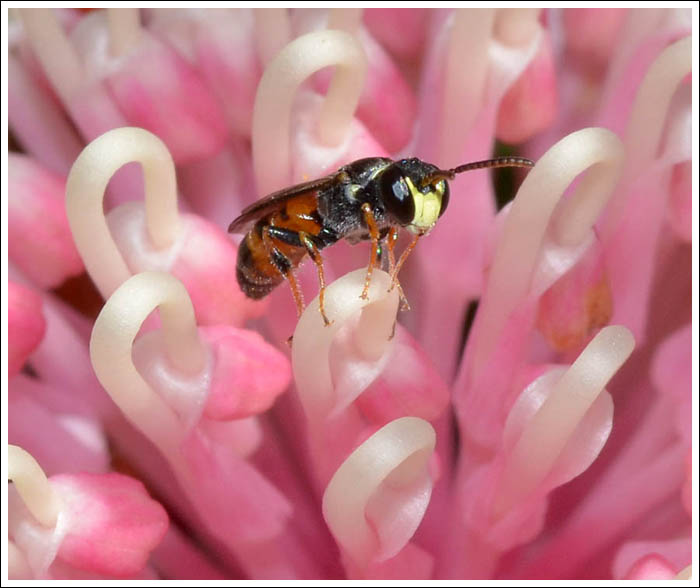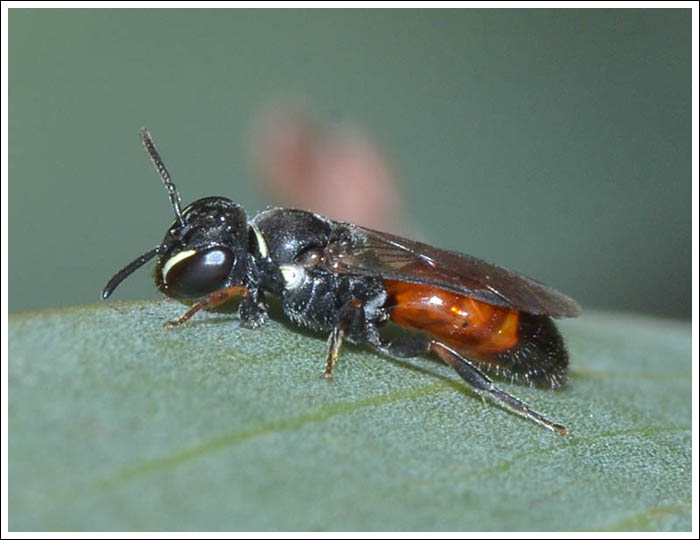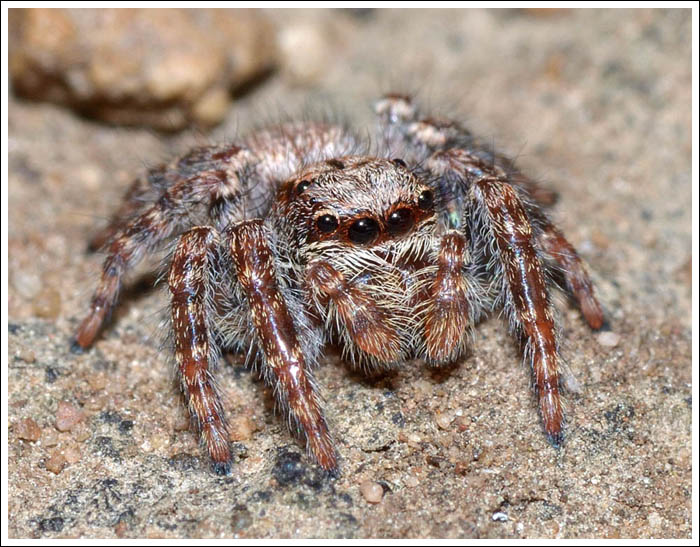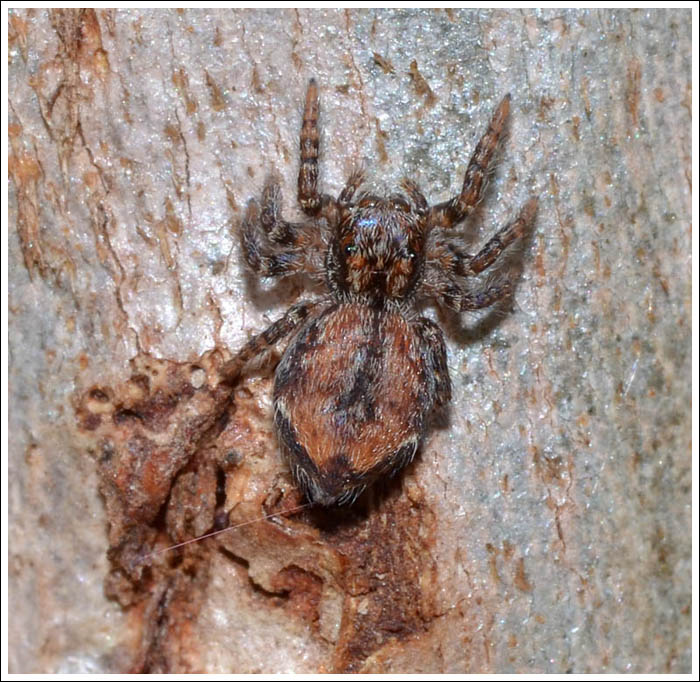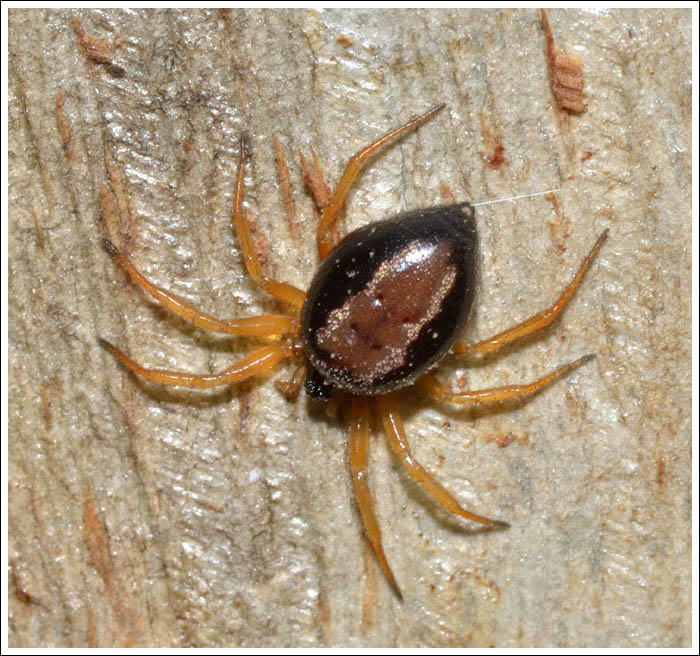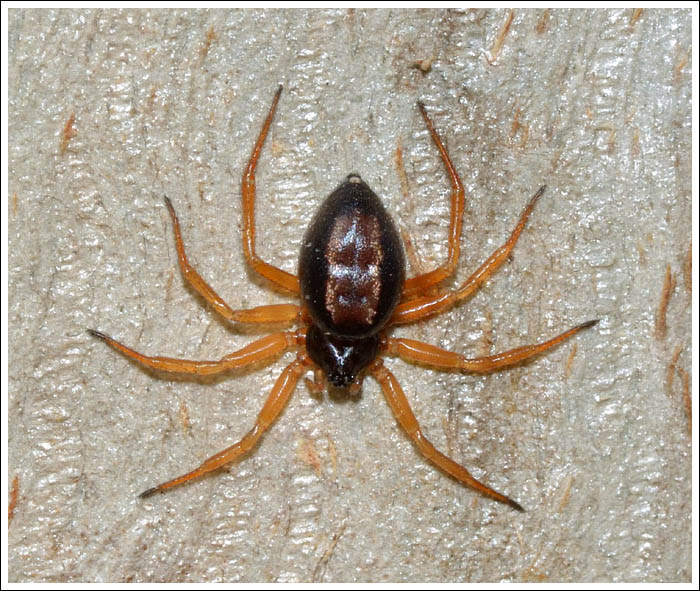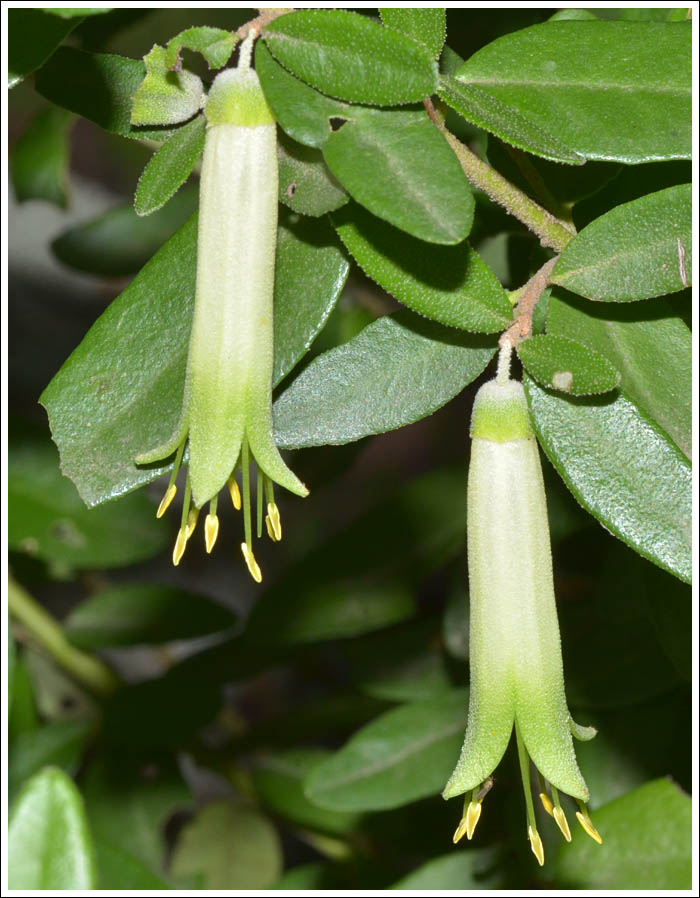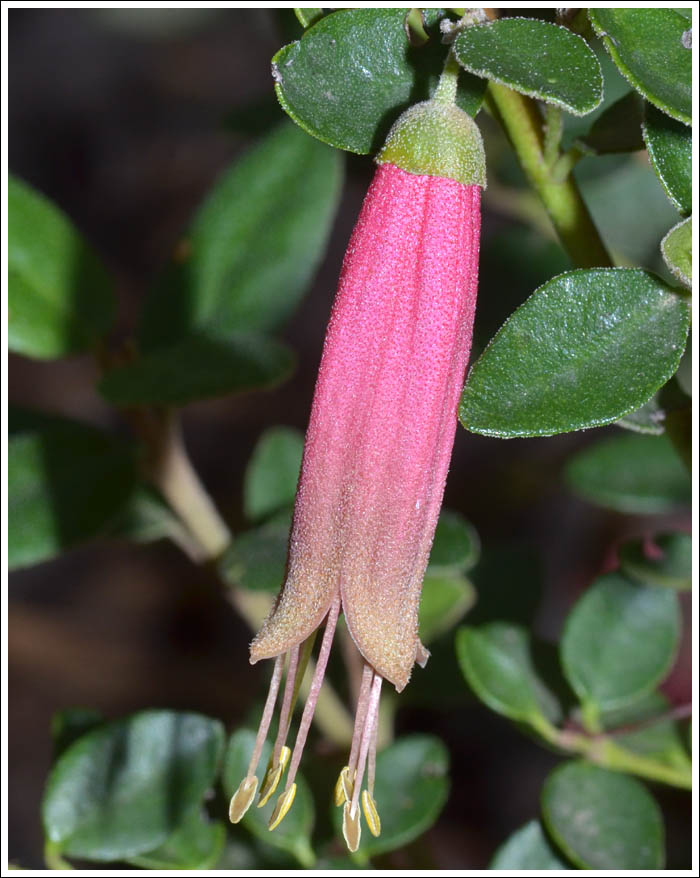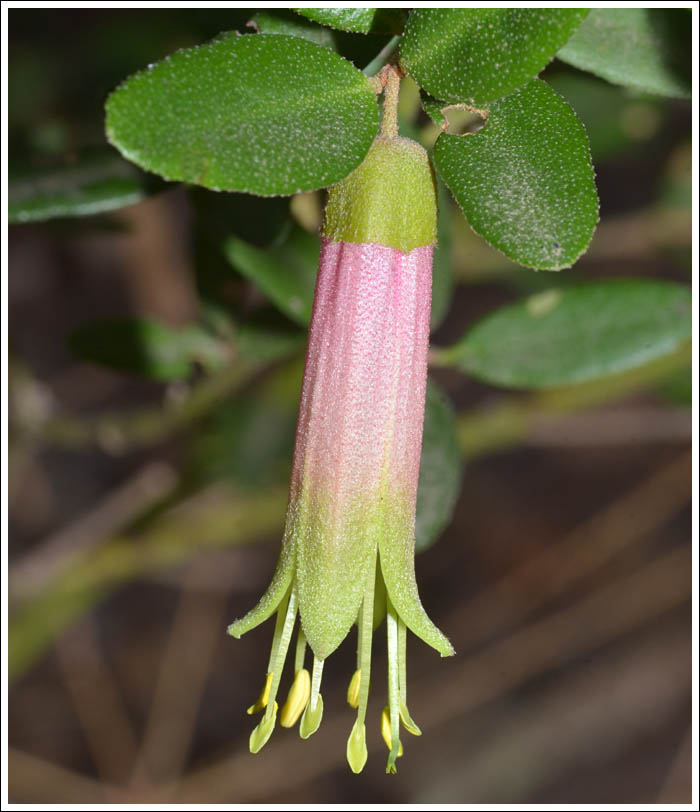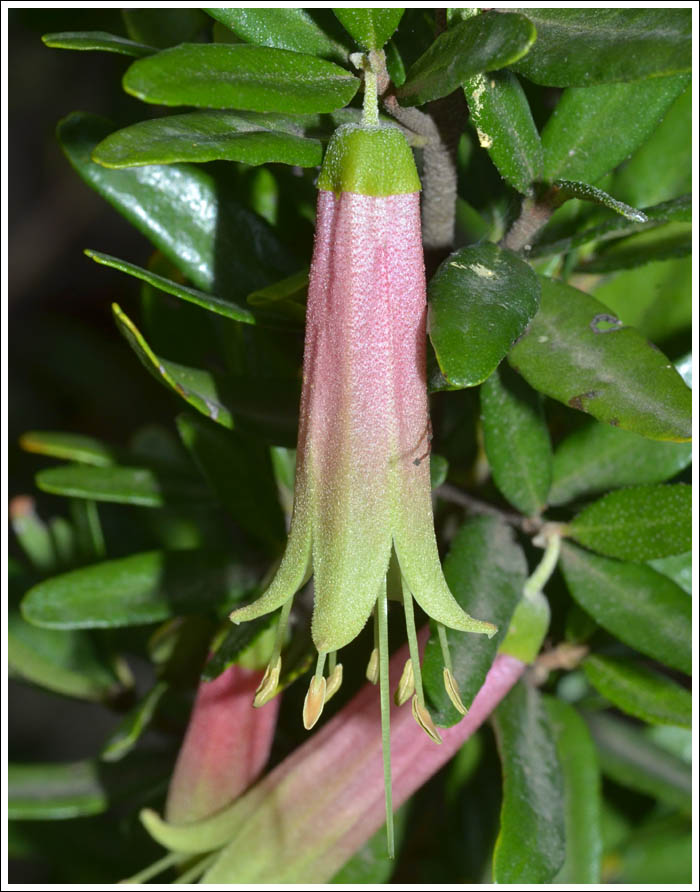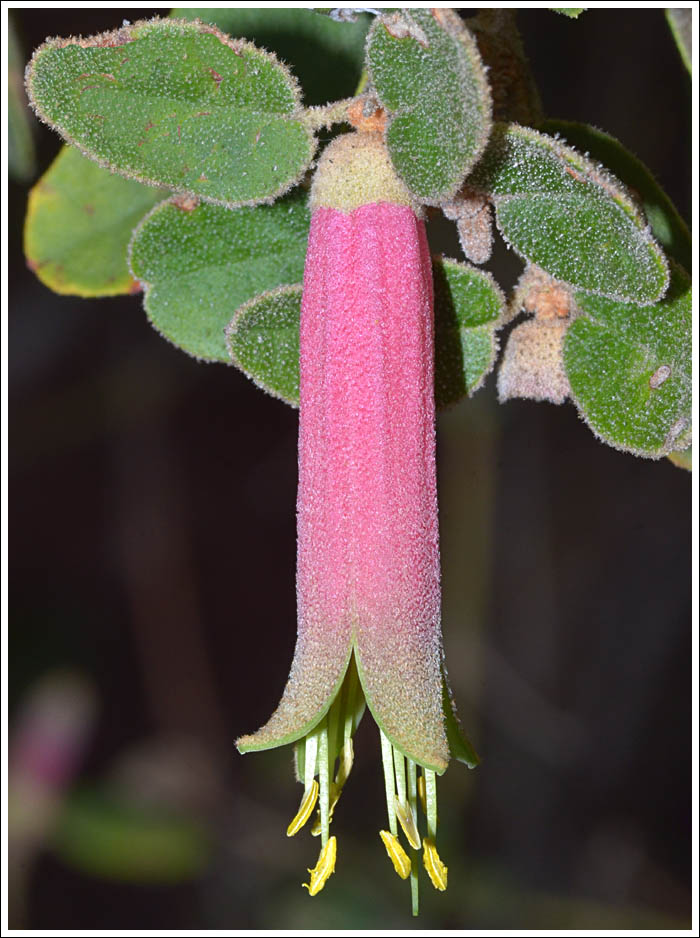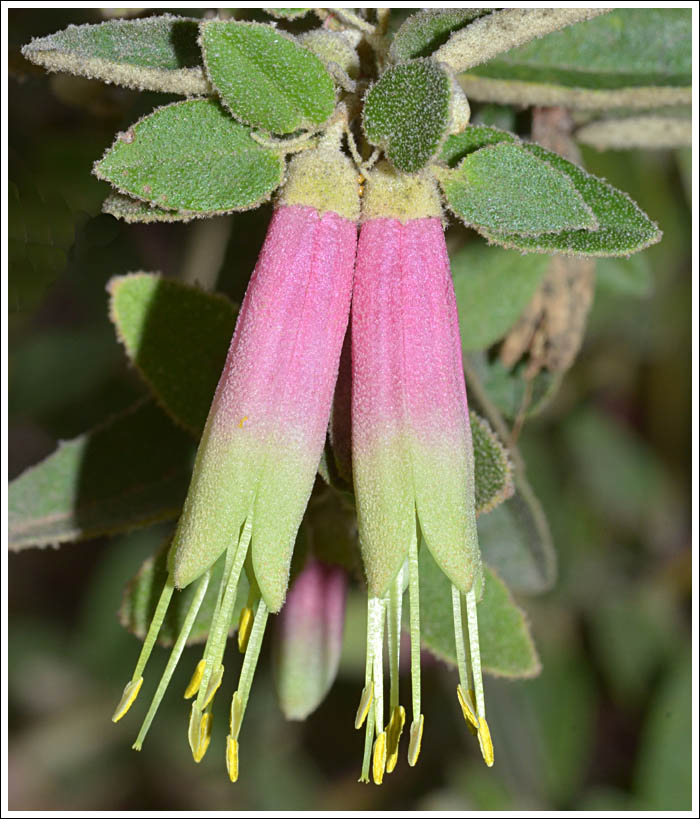Verbena bonariensis, aka Purpletop is native to South America, but is a garden escape now widely naturalised in Australia. There are two forms, var. bonariensis and var. conglomerata, and is found along the river and creek in the local nature reserve. It is sometimes classed as a noxious weed, but in the reserve it does not get out of hand and is a source of nectar for butterflies, both native and introduced. As autumn draws to a close it is still in flower and attracting butterflies, Cabbage Whites in unusual numbers, and Common Grass Blues. These are also coming to the end of their season and are showing wear and tear, with wings tattered, and losing the scales that normally give the wings their beauty
Autumn is hakea time, the Hakea laurina is just starting to come into flower, and true to form, the tiny but feisty and territorial native bees Hylaeus (Prosopisteron) littleri are on hand to claim and stand guard over their flowers.
Male.
Female.
Jumping spiders are scarce now, but on a warm day, the red gums which at this time of year have plenty of sheltering loose bark, can still come up with the occasional Servaea incana. This species seems to have a particular liking for the garden red gums.
One may perhaps be forgiven for not associating jumpers with spider web, but they will use their silk for a safety line, which this photograph shows.
The big yellow gum also has loose bark still clinging to the trunk, shelter for two other bark-dwelling spiders. Euryopis umbilicata, formerly known as E. superba is in the same family as the Redback, the Theridiidae. It is a beautiful small spider, two were found on the same trunk, one also with its safety line visible in the image.
The Superb Anteater.
The sac spider Clubiona modesta lives under loose bark and this female dropped to the ground when its cover was removed, it quickly found a new retreat.
Click images to enlarge.


